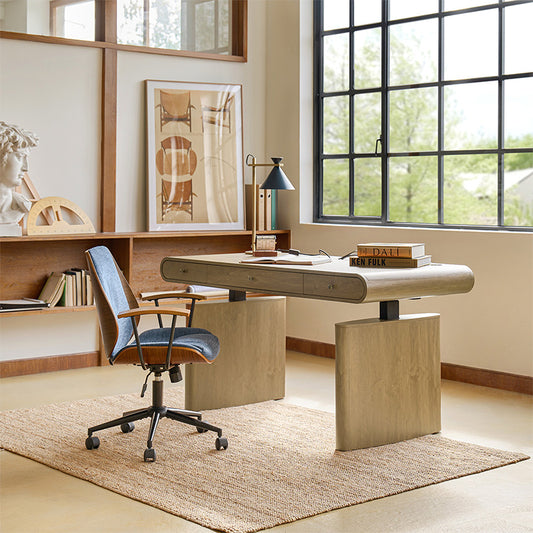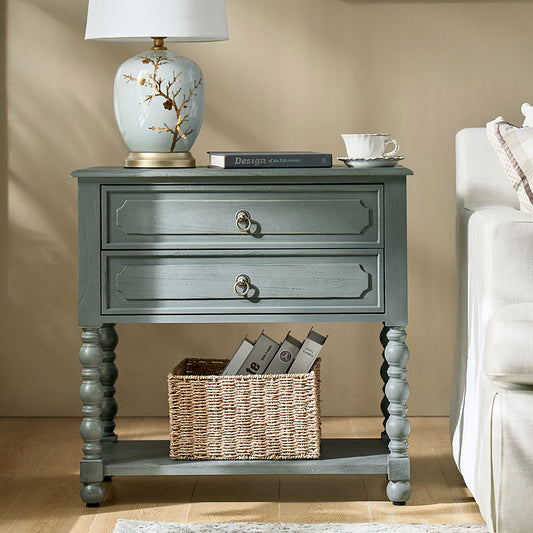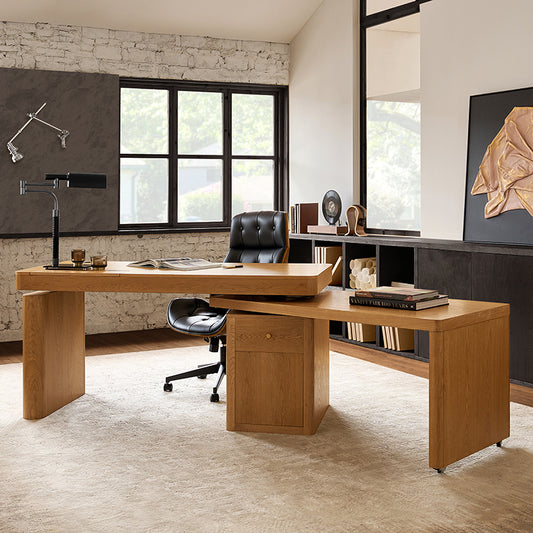Budget-Friendly Functional Home Office Design

In today's world, a well-designed home office is not just a luxury but a necessity. Whether you are a college student, a recent graduate, or a remote worker, having a functional workspace can significantly enhance your productivity and overall well-being. This guide will explore how to create an efficient home office without breaking the bank.
Needs of Different Groups
-
College Students Living Independently
For college students living independently, space and budget constraints are major concerns. They need to balance study and leisure activities in a compact space. Choosing multifunctional furniture becomes crucial, such as desks that can double as dining tables and chairs with extra storage space. This saves both money and space. Extendable coffee tables can adapt to various activities like studying or relaxing.

-
Recent Graduates
Recent graduates face the challenge of establishing a professional yet personal workspace in a small area. They need to create a private, relaxing environment where they can confidently make video calls. Given their likely limited finances, they prefer affordable yet durable furniture. Additionally, they need to clearly distinguish between work and personal life areas to balance their lives and work.

-
Remote Worker
Remote workers spend long hours at their desks, so choosing ergonomic and comfortable furniture is a top priority. A tidy, quiet environment boosts their productivity, making it worth investing in budget-friendly upgrades like ergonomic chairs or adjustable desks. Finding cost-effective solutions to improve comfort and efficiency is essential for this group.

Part 2: Budget-Friendly Home Office Essentials
Desk Options-
Foldable or Compact Desks: Foldable desks are perfect for small spaces. They can be unfolded when in use and folded away to save space when not needed.
-
DIY Desk Solutions: If you can’t afford or find the right desk, DIY! Use inexpensive materials like plywood and cheap table legs to create a custom desk that suits your needs.
-
Multifunctional Desks: Choose desks that can serve multiple purposes, such as a work table and dining table, to maximize functionality and save both space and money.
Seating Solutions
-
Affordable Ergonomic Chairs: A comfortable chair should have adjustable height and lumbar support. Choose ergonomic chairs that are functional yet affordable.
-
Cushions or Back Support: Adding a cushion or back support to your chair is essential to avoid discomfort from hard seats or lack of lumbar support. Inexpensive cushions or lumbar supports can enhance the comfort of your existing chair.
-
Alternative Seating: Think outside the box; items like yoga balls can replace chairs, offering both affordability and improved posture.
-
Budget-Friendly Storage Solutions: Use shelves, storage boxes, and organizers to keep your space neat and tidy.
-
DIY Storage Ideas: Create your own storage solutions using old boxes or wooden crates to keep items organized and avoid clutter.
-
Decluttering Tips: Regularly declutter and use drawer organizers to maintain a clean and orderly space.
-
Importance of Good Lighting: Proper lighting affects not only the overall ambiance but also your eye health. Adequate lighting reduces eye strain and enhances productivity.
-
Affordable Desk Lamps: Opt for reasonably priced desk lamps with adjustable brightness to suit different tasks.
-
Utilizing Natural Light: Position your desk near a window to take advantage of natural light, which can boost mood and energy levels.

Tech Essentials
-
Cost-Effective Tech Accessories: Equip your home office with affordable tech accessories like laptop stands and wireless keyboards to improve efficiency.
-
Maintaining Tech Devices: Regularly clean and update electronic devices to ensure they run smoothly, reducing the need for costly repairs.
-
Good Internet Connection: A reliable internet connection is crucial for work and entertainment, supporting activities like video calls, online work, streaming, and gaming.
Part 3: Design and Decoration Tips
Creating a Personalized and Motivating Space-
Showcase Personal Style: Use decorations that reflect your personal style, such as framed posters or unique artwork. DIY crafts or photo frames can also add a personal touch.
-
Affordable Decoration Ideas: Incorporate budget-friendly decor like plants, DIY art, and affordable decorations to create a cozy and inviting atmosphere.
-
Maintaining a Pleasant Work Environment: A functional and pleasant work environment boosts motivation and mood, so it’s essential to create and maintain such a space.
-
Space-Saving Furniture: Choose easily movable or adjustable furniture to fit the space.
-
Utilizing Vertical Space: Don’t overlook walls; install shelves or wall storage units to make the most of vertical space, keeping your home organized and stylish.
-
Flexible Layouts: Select modular furniture that can be rearranged to fit different moods and styles, offering more flexibility.
-
Simple DIY Projects: Use basic craft supplies to make custom desk organizers or decorations. This approach is budget-friendly and environmentally friendly while enhancing the beauty of your home.
-
Upcycling Old Furniture: Consider second-hand furniture; give it a fresh look with new paint or hardware. This is both cost-effective and eco-friendly.
-
Personalized Office Space: Add personality to your workspace through DIY projects, making it unique. Customize your office layout to suit your aesthetic preferences and habits.

Part 4: Budgeting and Planning
Setting a Budget-
Essentials vs. Nice-to-Haves: Identify what items are essential and which can be delayed, avoiding unnecessary expenses while keeping the space from feeling cluttered.
-
Prioritizing Purchases: Buy essentials first, then purchase other items based on your budget.
-
Tracking Expenses: Keep a detailed record of office design expenses to ensure spending stays within budget.
Finding Deals and Discounts
-
Affordable Furniture and Decorations: Look for discounts, promotions, and clearance items to save on necessary purchases. Use the saved funds to enhance other areas.
-
Second-Hand Stores and Online Markets: Explore local second-hand stores and online marketplaces for budget-friendly finds. You might discover items that fit your needs perfectly.
-
Seasonal Sales and Student Discounts: Take advantage of seasonal sales and special discounts for the best deals. If you are a student, check if the store offers student discounts. Don’t miss out on seasonal promotions either.
Long-Term Considerations
-
Investing in Durability: Prioritize items that offer long-term use and multifunctionality, even if the initial cost is higher. This reduces future replacement costs.
-
Planning Future Upgrades: Plan for future needs and budget for upgrades accordingly.
-
Balancing Quality and Cost: Find a balance between quality and price to ensure the home office is both practical and economical.
Creating a functional home office on a budget is entirely achievable with careful planning and smart choices. Different groups have unique needs, and you can design a space that is both practical and stylish. Start designing your budget-friendly home office today and enjoy a productive, comfortable, and inspiring workspace!
Explore our range of affordable furniture and decor items to kickstart your home office setup. Share your tips and experiences in the comments or on social media!


































No comments